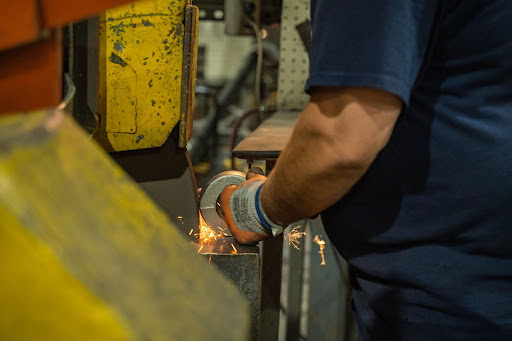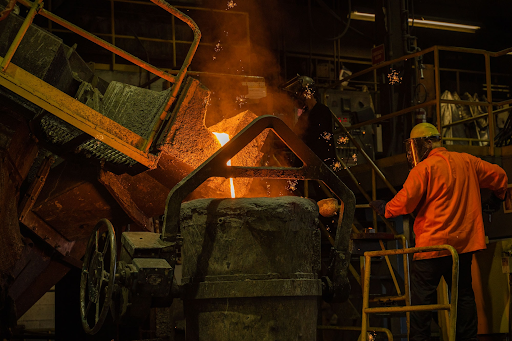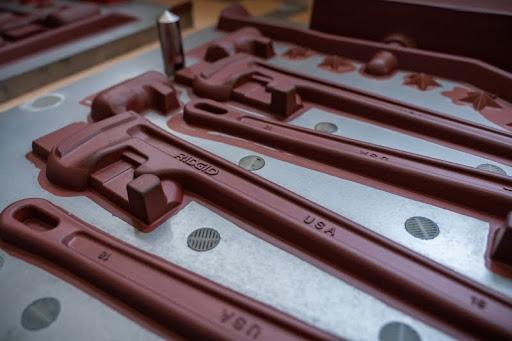Ductile iron is a highly versatile metal, used in a wide variety of industries. Ductile iron's versatility comes from its unique properties, which make it both durable and flexible.
The advantages of ductile iron include its low melting point, enhanced machinability, and high strength. Compared to cast iron, ductile varieties are less brittle and require less ongoing maintenance.
Ductile iron grades help to categorize castings based on three key metrics — tensile strength, yield strength, and elongation. These three key indicators of mechanical performance can help match an appropriate casting with its intended application.
Decoding Ductile Iron Properties

Ductile iron is known for its superior mechanical properties compared to traditional cast iron, including strength, durability, and flexibility.
In the ductile iron casting process, a specific amount of magnesium is added to molten iron during solidification, which alters the formation of graphite from flakes to spheroids. The unique spherical nodules of graphite in this nodular iron enhance its pliability and resistance to cracking under stress.
These properties are due to its high tensile strength and high yield strength, or the ability to withstand pressure without breaking and to return to its original shape after being bent, respectively. Ductile iron also possesses a higher elongation rate, referring to how far it can be pulled without breaking. These three properties are what determine a ductile iron's grade.
Ductile Iron Casting Grades: Comparisons and Applications

A desired ductile iron grade can be obtained by controlling the matrix structure that forms around the graphite nodules during the casting process. They commonly fall under the standard specification ASTM A536. This standard was set by ASTM International, an organization that sets technical standards for a variety of materials, products, and services. Following these standards allows companies to ensure a consistently high quality.
From there, the grades are further classified by a series of three numbers, each one relating to a different property. The first number represents the minimum tensile strength, the second number represents the minimum yield strength, and the last number refers to the rate of elongation during the tensile test. This makes it easy to quickly discern the grade's properties. For example:
D4512 Grade 65-45-12
65-45-12 is a highly ductile and easily machineable grade. While the tensile and yield strengths are relatively low, it has a higher elongation rate in exchange. The unique graphite structure in this grade enhances its wear resistance, making it suitable for applications like brakes, pumps, and compressors.
D5506 Grade 80-55-06
80-55-06 is moderately ductile and has higher strength than 60-40-18. it's often used in brakes and pumps, as well as gearboxes and wind energy components. Additionally, this grade exhibits excellent corrosion resistance, which can be further enhanced by incorporating elements like copper, nickel, and chromium.
D7003 Grade 100-70-03
100-70-03 is a strong, durable ductile iron grade. While it has a lower elongation rate, it remains stable in higher temperatures. It's commonly used in transmissions and for high-strength machine components.
Optimizing Projects with the Right Ductile Iron Grade

For those not familiar with the difference between ductile iron grades, choosing the right one for a project can be a difficult task. The right grade will allow for maximum part efficiency and longevity while also remaining cost-effective. Here's how to choose the best grade for you:
Know What Your Project Needs
First and foremost, you need to understand which ductile iron quality to prioritize in your project. For example, if you require an extremely hard metal that can hold up to constant friction, you'll know to choose a higher grade. If you're making brake components and need something with a high elongation rate to withstand vibrations, you'll know to choose a lower grade. Knowing what you need will allow you to narrow down your options considerably.
Don't Automatically Select High Grades
When selecting a ductile iron grade, you may decide to choose a higher grade regardless of the ductile iron's planned application. However, while higher grades do possess a higher tensile strength, they also have a lower elongation rate. This makes them brittle and unsuited for tasks that require flexibility.
Check Your Budget
Higher grades of ductile iron have higher manufacturing costs, which makes them more expensive. Even if your project requires a high grade, make sure that it's only as high as necessary.
When in Doubt, Consult a Professional
Ultimately, ductile iron foundries will understand their product better than anyone. If you're not sure what grade will work best for your project, get in contact with a manufacturer. They'll be able to match your project to a suitable grade of ductile iron.
Quality Ductile Iron at Urick Ductile Solutions

No matter the grade, it's important to have high-quality ductile iron for your applications. At Urick Ductile Solutions, we pride ourselves on producing ductile iron castings that consistently meet ASTM A536 standards. Every casting is rigorously tested throughout the manufacturing process, which means that, when paired with our efforts towards transparent client communication, we can truly say we're proud of every piece we make. Contact Urick and request a quote for your project today!



